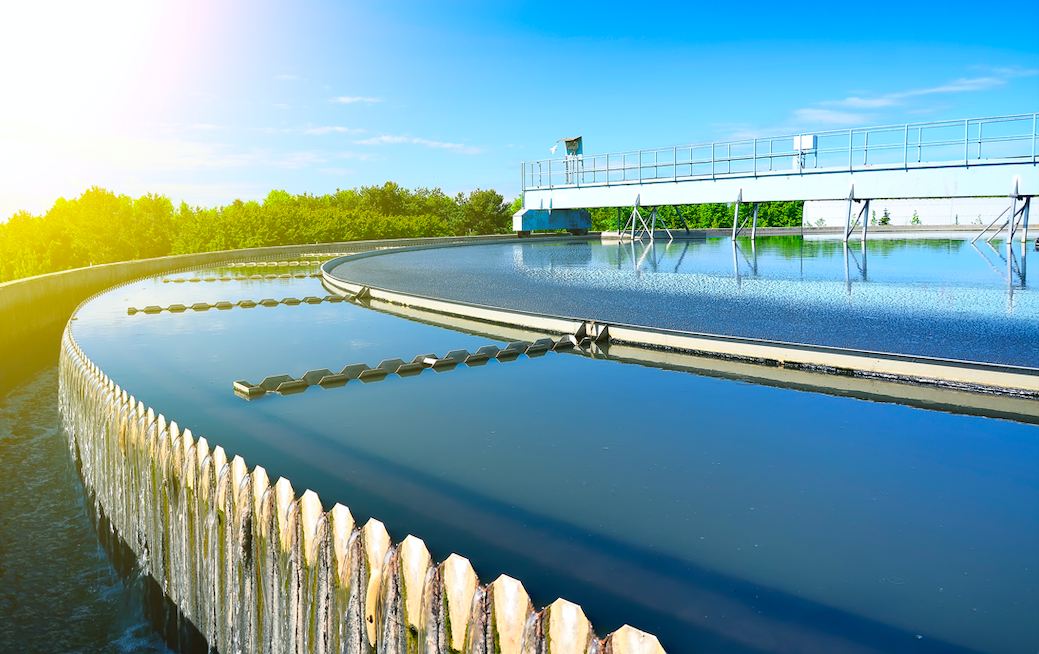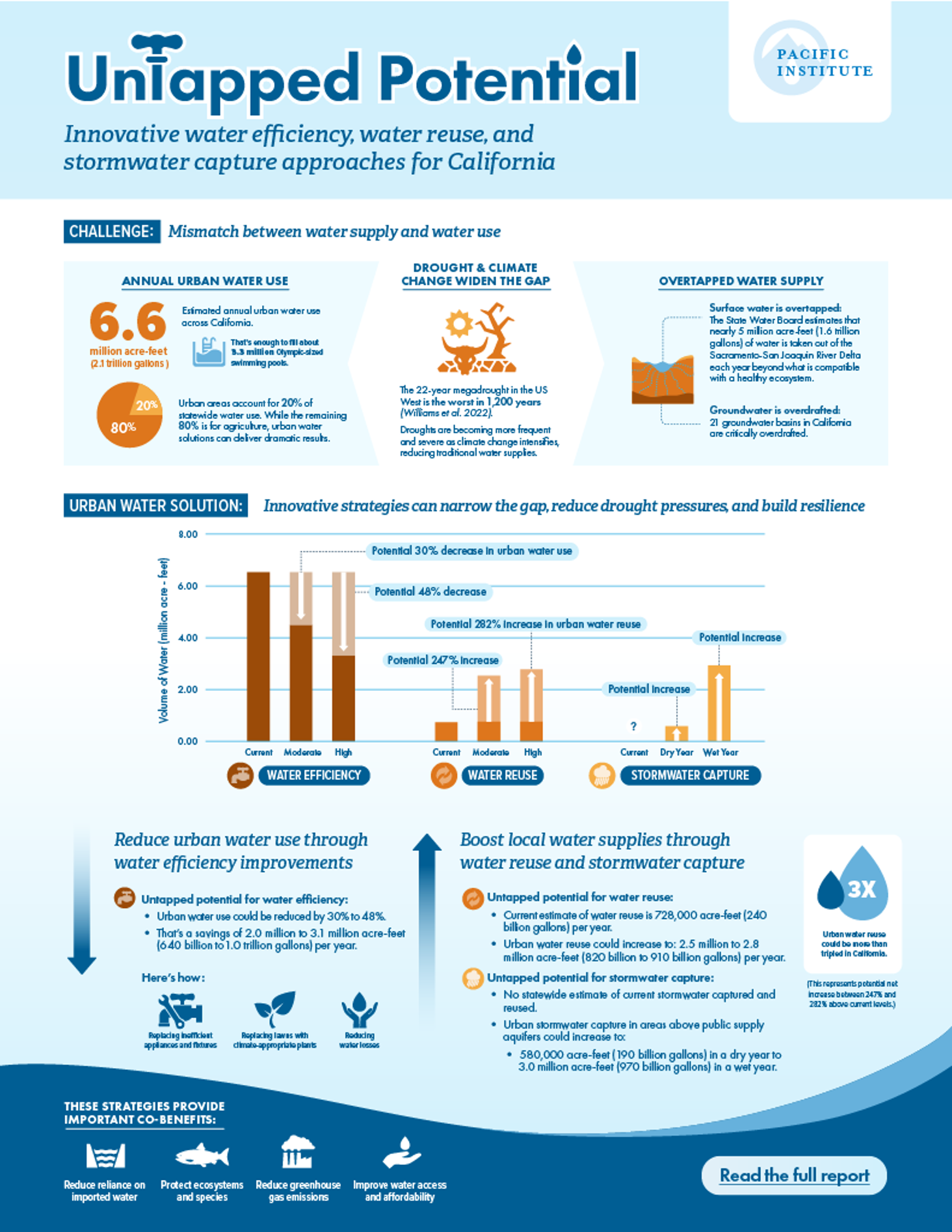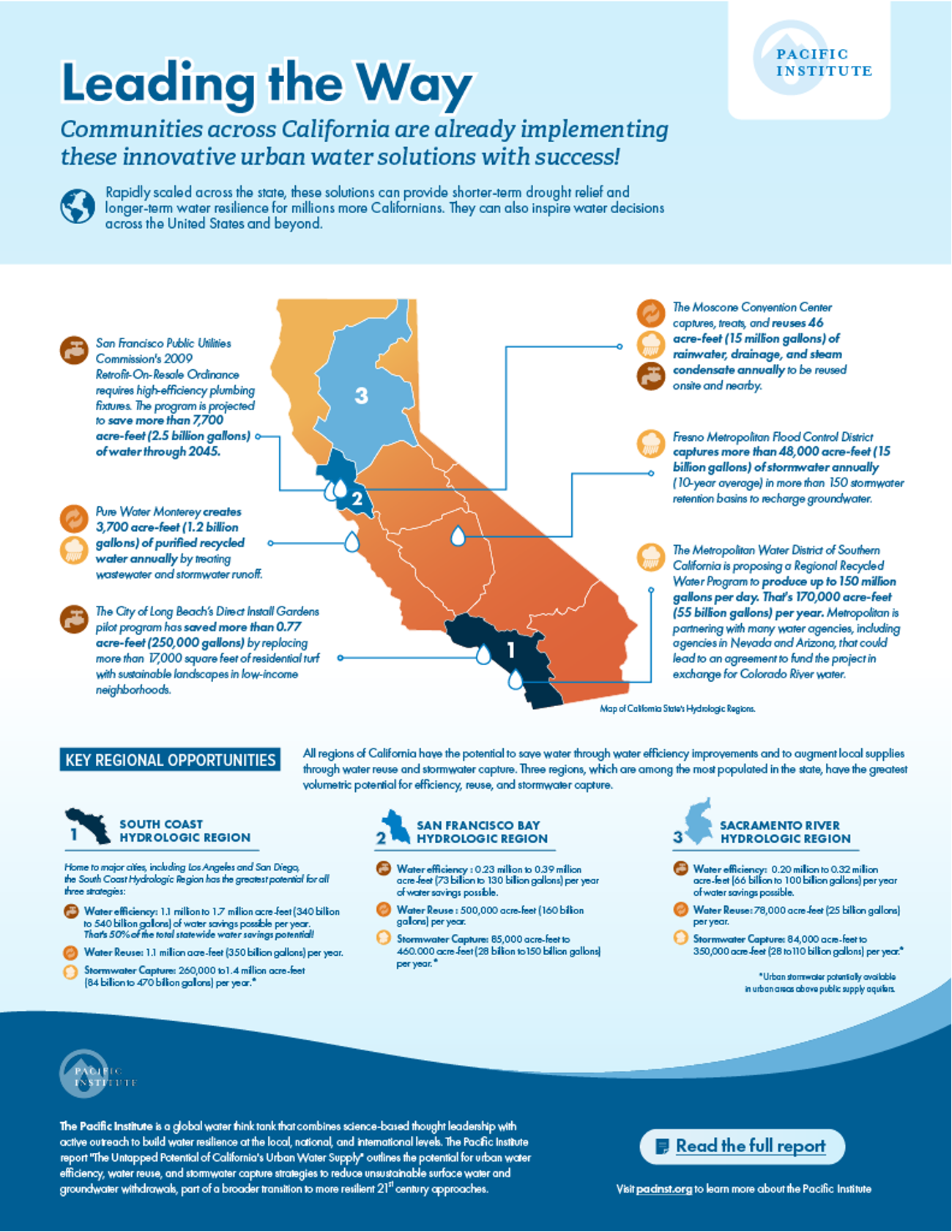Innovative urban water strategies offer vast opportunity for California drought relief and longer-term water resilience
Dr. Amanda Bielawski, Heather Cooley, Dr. Peter Gleick, Dr. Sonali Abraham, Dr. Anne Thebo, and Morgan Shimabuku
Key takeaways
- California is in its third year of severe drought exacerbated by climate change. There is a wide gap between water use and local water supplies.
- New research from the Pacific Institute shows California could reduce urban water use by 30% to 48% by increasing investments in urban water efficiency measures.
- The same research shows California could also boost local non-traditional water supplies – more than tripling our current water reuse levels and significantly increasing stormwater capture approaches.
- These innovative approaches are cost-effective and technologically feasible, offer valuable co-benefits, and are already being implemented across many California communities. They are part of a broader transition to water resilience.
- New report: “The Untapped Potential of California’s Urban Water Supply: Water Efficiency, Water Reuse, and Stormwater Capture”: View report here. View the full infographic here.
Throughout California, innovative urban water strategies—water efficiency, water reuse, and stormwater capture—are already finding success in many communities. These cost-effective and technologically feasible strategies reduce urban water use (currently 6.6 million acre-feet per year), while boosting local water supplies. As a result, they can help narrow the gap between how much water urban California now uses and how much water is available. Combined, they provide an opportunity for shorter-term drought relief and long-term water resilience. (Read more about water resilience in the Pacific Institute’s Water Resilience Issue Brief here.)
Dramatic numbers show untapped potential to implement urban water strategies
A new analysis, “The Untapped Potential of California’s Urban Water Use,” released today by the Pacific Institute quantifies the potential to scale these strategies across urban California:
- Reducing water use through water efficiency: The report finds California could save 30% to 48% of its urban water use, by implementing and expanding water efficiency measures, including replacing inefficient clothes washers and other appliances with high-efficiency models, replacing lawns with climate-appropriate plants, and reducing losses in water distribution systems. The analysis finds these efficiency measures could reduce California’s urban water use by 2.0 million to 3.1 million acre-feet per year.
- Increasing local water supplies through water reuse: Municipal water reuse could be more than tripled in California, significantly adding to local water supplies. While an estimated 728,000 acre-feet of municipal wastewater are currently reused annually for groundwater recharge, irrigation, and other beneficial use across the state, the new assessment identifies the potential to increase statewide reuse to 2.5 million to 2.8 million acre-feet per year.
- Increasing local water supplies through stormwater capture: While there is no statewide estimate of the amount of urban runoff now captured, it’s clear there is significant opportunity to capture more. The new analysis finds urban stormwater capture potential in the state ranges from 580,000 acre-feet in a dry year to 3 million acre-feet in a wet year in urban areas overlying public supply aquifers.

During a report briefing this morning attended by hundreds of water leaders and stakeholders in California, across the United States, and internationally, the Pacific Institute highlighted some current success stories in each of these areas.

In San Francisco, a Public Utilities Commission ordinance requiring higher efficiency plumbing fixtures to be installed whenever housing is sold to a new owner is projected to save more than 2.5 billion gallons cumulatively through 2045. Meanwhile, a water reuse facility proposed by the Metropolitan Water District of Southern California would produce up to 150 million gallons of water daily, boosting local non-traditional water supplies by 170,000 acre-feet (55 billion gallons) per year. Read more about these—and other—examples in this infographic.

And, in the Fresno area, more than 150 stormwater retention basins recharge more than 15 billion gallons of groundwater annually (on 10-year average). Read more about these—and other—examples in this infographic.
Part of a broader transition to 21st century water resilience thinking
What might we learn from these examples? As California enters a third year of severe drought—intensifying due to climate change—these strategies could be a game changer for the future. Rapidly scaled across the state, they could provide future drought relief for millions of Californians. Thinking more broadly, they also provide valuable co-benefits. For instance:
- By increasing local supplies, communities can effectively reduce reliance on imported water.
- These approaches can also leave more water for nature, protecting threatened ecosystems.
- By reducing energy required to collect, move, treat, and use water, these strategies also have the potential to reduce greenhouse gas emissions.
Given their benefits and co-benefits, these innovative urban water strategies must be part of a systemic transformation to a 21st century water management model focused on resilience, not only for California, but for drought-prone regions across the US West and the globe that are facing the debilitating impacts of water extremes intensifying due to climate change.
How do we rapidly scale these ideas?
Innovative urban water projects like those referenced above in San Francisco, Southern California, and Fresno offer inspiration for more to come. So, how do we push for these strategies to be scaled fully and quickly across California–and beyond?
The study includes detailed policy and practice recommendations for water utilities and suppliers, as well as local, regional, state, and federal agencies and policymakers. These recommendations include increasing state and federal funding, expanding local water agencies’ customer incentive programs, pursuing ordinances, focusing programs on long-neglected low-income households and communities, and providing technical support. To see the full list of detailed policy and practice recommendations, download the report here.
Whatever role you play in our water systems, we invite you to see what part you might play—in increasing investments in and implementation of these urban water strategies. You will be building a more water resilient California along the way.
Learn more about water resilience in the Pacific Institute’s Water Resilience Issue Brief here.
See the full infographic below.





